The Guide to Product Bundling: Examples, Strategy & Pricing
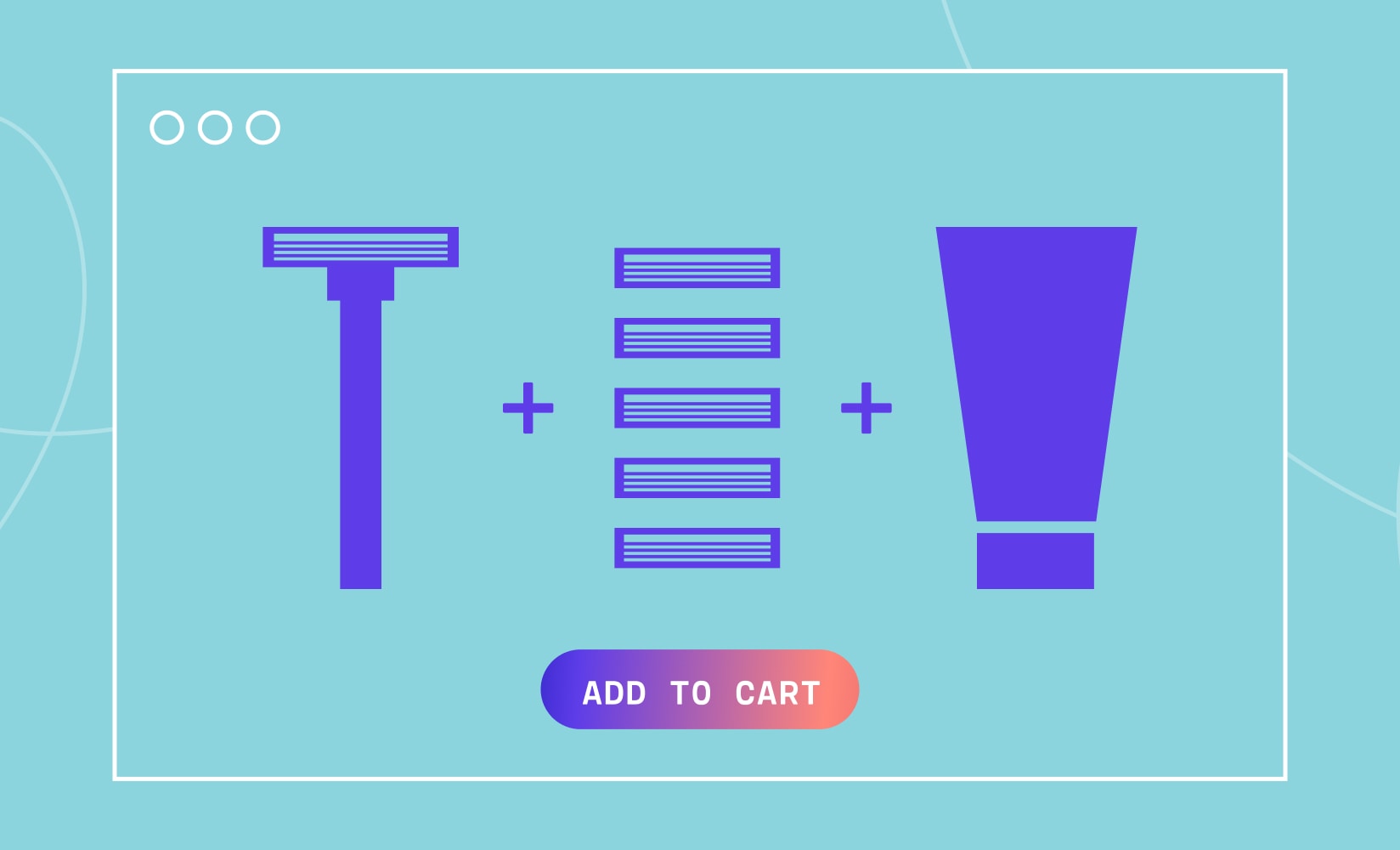
Product bundling is a highly effective sales promotion tool for ecommerce stores.
It offers online stores the opportunity to provide convenience and value to their shoppers by pairing products together and selling them as one unit.
Consequently, this creates an excellent customer experience that cultivates loyal customers.
Selling product bundles also helps brands increase their AOV, clear their deadstock, introduce new products, and much more.
In this post, we’ll go into more detail about product bundling and explore:
- What product bundling is
- Product bundle pricing
- Advantages and disadvantages of product bundling
- Types of product bundling strategies
- Best practices that’ll increase sales
Let’s jump in.
#cta-visual-pb#<cta-title>Customize your store’s product bundle pages with Shogun Page Builder<cta-title>Use Shogun’s extensive library of elements to design a bundle page that showcases your products today.Start building now
Product bundling is when a brand sells two or more products together as one bundled package. Brands can create an infinite number of combinations of products to sell as bundles.
Although often sold at a discount, bundled products ultimately increase profits by encouraging the purchase of multiple items.
A company like Apple uses cross-sells and upsells to sell bundled products. Let’s use the example of a shopper that selects a 13-inch Macbook Pro with 256GB SSD storage:
- Upsell. After the shopper selects the MacBook Pro, they’ll see the option to upgrade its storage to either 512GB, 1TB, or 2TB. The price increase is relatively small for each amount of additional storage.
- Cross-sell. After the shopper adds the MacBook Pro to their cart, they are shown hardware add-ons like a USB-C to Lightning Cable or USB-C to USB Adapter. These products are a reminder that their MacBook may need additional products for optimal functionality.
Another example of popular product bundlings is matching shampoo and conditioner products.
When loyal customers add shampoo to their cart, displaying the accompanying conditioner bypasses the added difficulty of searching for a complimentary product.
This motivates them to follow through with bundling the two products and purchasing them at the same time.
Two main types of product bundling
The most popular bundling strategies that we discuss later in this post typically fall into two main types of product bundling—mixed and pure.
Mixed bundling
Mixed bundling is when a product bundle comprises products that can also be bought separately from the same store.
Studies have shown that mixed bundling is especially effective—with pure bundling shown to reduce sales by over 20% compared to mixed bundling.
Koh is an online brand that sells mixed product bundles.
Below you can see their Starter Bundle that sells four different cleaning products that can be used together. Koh also sells these products individually.
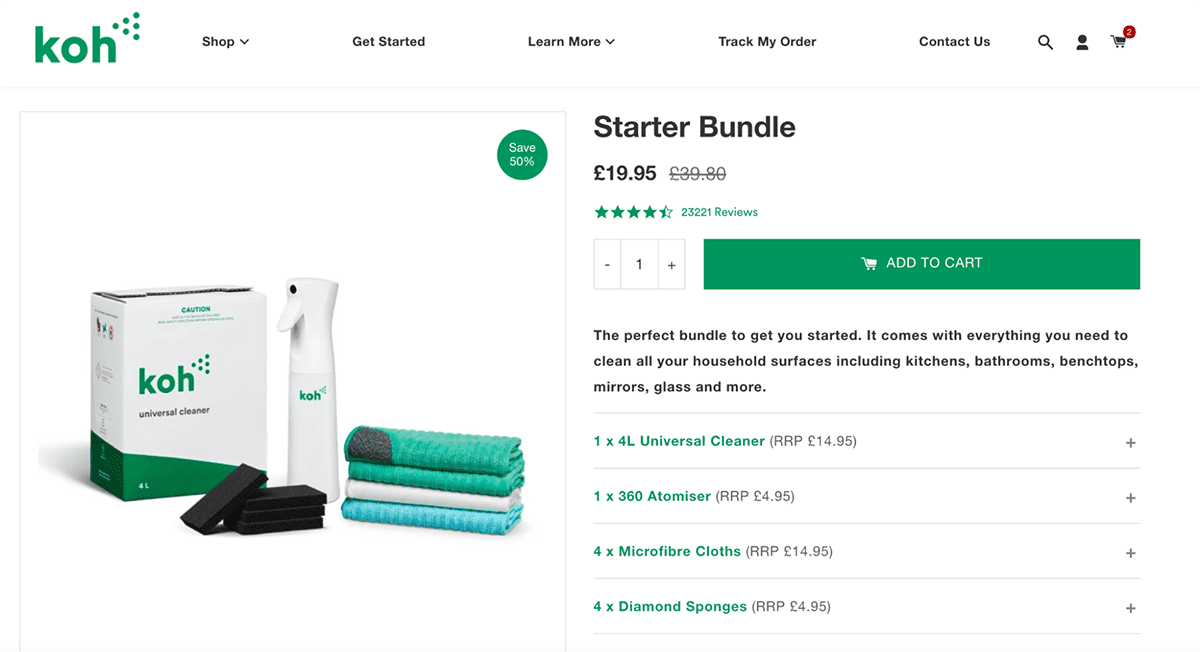
Pure bundling
All or nothing, pure bundling is a type of product bundle where the individual products that make up a bundle cannot be purchased separately from the same store.
Wayfair sells a pure bundle sewing kit that contains four products. Shoppers can’t buy the main items individually.
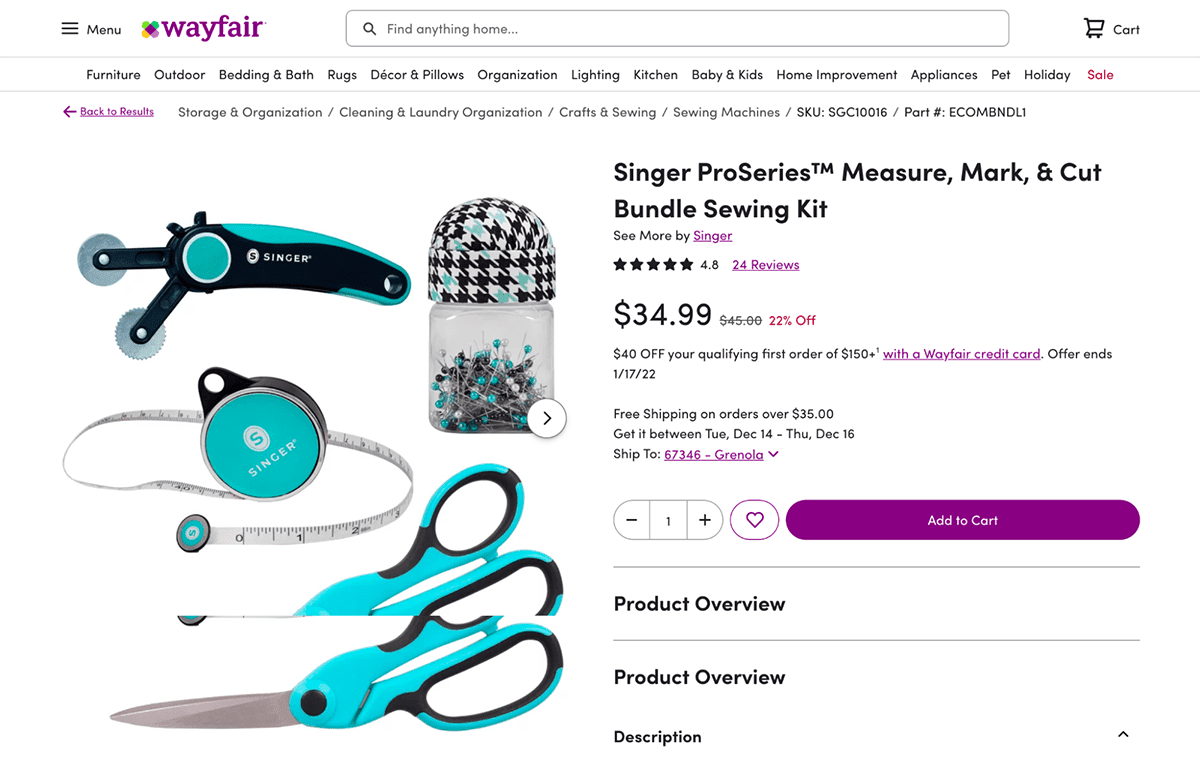
Bundle pricing is a pricing strategy that brands use to sell product bundles at a single and often reduced price.
Let’s see what makes this type of pricing effective and how to calculate it for your brand.
Why is product bundling pricing effective?
The difference between what the consumer will pay for certain products and what they actually pay is known as the consumer surplus.
Acquiring the maximum amount of your customers’ consumer surplus while still offering a discount (so they feel they are getting a good price) is the goal of bundle pricing.
Typically, if you set the price of your bundled products to lower than or equal to what your potential want to pay, they consider the price point a bargain.
For shoppers that are price sensitive, bundle pricing helps them make a purchasing decision.
Indeed, research has shown that when customer consumption level is low, bundles can improve retailer profit and customer surplus at a higher rate.

How to calculate bundle pricing
Your brand can calculate the price and size of your product bundles in a few stages:
Decide which products should be sold in a bundle
It’s essential that you use data to drive your product pairing decisions.
By analyzing customer data and tracking product performance metrics—you take the guesswork out of deciding which products will create the most sales when paired as a bundle.
Studies have shown that retailers make significantly better decisions about bundling products when they integrate and analyze browsing and shopping cart data together.
Use data to determine optimal prices and size of your product bundles
With bundle pricing, the cost of your bundles should be lower than the cost of the individual products if they were to be purchased individually in one order.
Additionally, studies show that the higher the discount you offer on your product bundles—the more you’re likely to sell:
- 20% discount on bundles: Customers often prefer to buy individual products if they only save 20% on the bundled products.
- 45% discount on bundles: If customers save 45% on the bundled products—their overall preference for bundles becomes higher instead of purchasing the individual products.
When deciding how many products should be in a bundle, consider this: Studies show that when the product cost is higher, it is better to bundle a small number of products at a higher price.
When the cost is lower, bundles with more products with lower prices sell better.
It’s also a good idea to track your competitors’ discounts and what products they offer in their bundles to inform your strategy.
Below are the top benefits of bundling that brands experience when they make it an integral part of their marketing strategy:
Increase revenue and average order value (AOV)
Average order value is the total revenue generated per checkout.
Since the goal of selling product bundles is to sell more products at once, you consequently increase your AOV and your order volume.
Ultimately, bundling increases revenue—and product bundling statistics confirm this:
- According to a Harvard Business School Study, Nintendo uses mixed bundling to boost unit sales by as much as 100,000 units with a single campaign.
- Studies by McKinsey report, 35% of purchases made on Amazon come from recommendations, some of which can be classed as bundles.
- Research has shown that both the retailer profit and customer savings under a bundle strategy are higher than that of an unbundled strategy—as seen in the graph below.
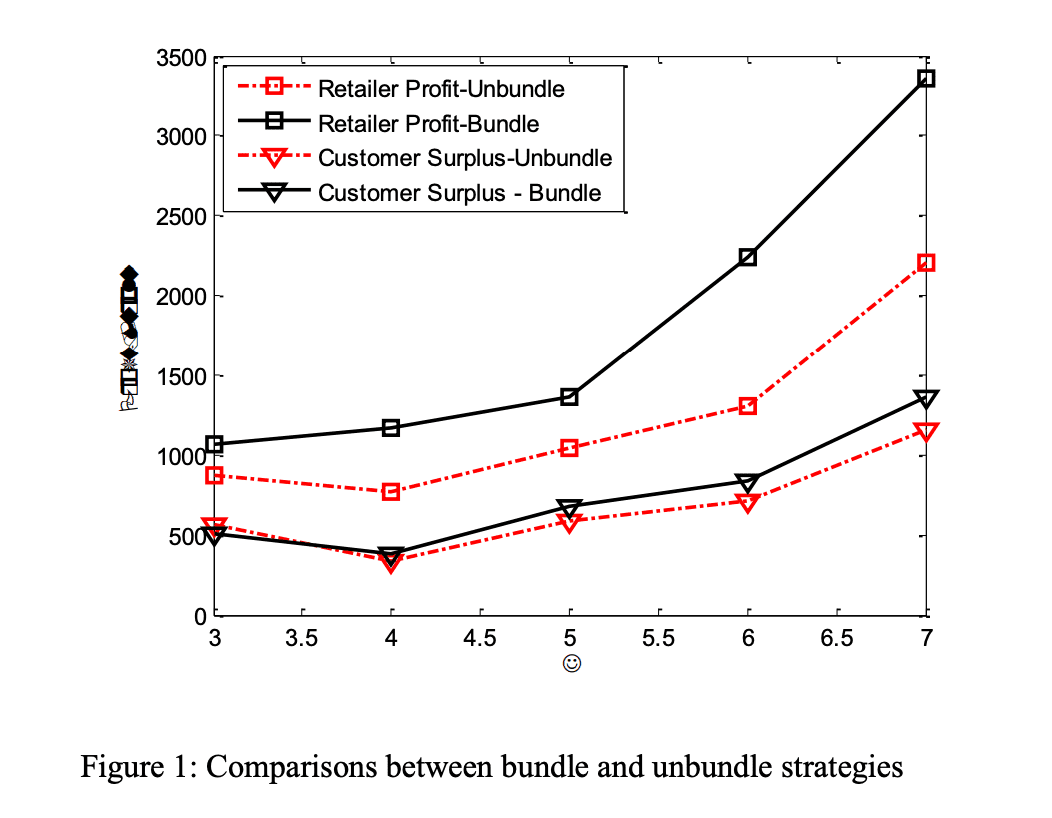
Save on shipping and fulfillment costs
Rather than purchasing individual items, shoppers buy products together as a bundle.
This means items are sent in bulk and in the same packaging—consequently lowering both your shipping and fulfillment costs.
Reduce warehouse stock
It can be difficult for online brands to sell less popular and lesser-known items.
This means they remain unsold and stay in your inventory as deadstock—with the potential to increase holding costs and turn into waste.
Pairing them in a bundle with products that customers are likely to buy helps reduce warehouse stock. Overall, it’s an excellent method for inventory control and helps with your inventory management.
Introduce new products
Pairing new products with popular products is a great way to move inventory more quickly than it would if you had to market the new product on its own. By bundling, customers can discover more products quicker and may be inspired to purchase more.
Issues with product bundling
There can be issues in developing and implementing a bundling strategy. Some of them are:
It can affect the individual sales of popular products
If you are selling a product with higher profit margins than the products it is paired your brand could suffer from loss of sales and revenue.
The prices of the individual products and the entire cost of the bundle must both be optimized—so that there are no harmful effects of cannibalization on your premium products or profits.
Customers may not want all of the products in the bundle
If your product bundles contain items that don’t compliment each other, it could put potential buyers off from making a purchase, hurting your customer’s experience.
Sometimes a large enough discount isn’t a good enough reason to entice your customers that the bundle is worth buying.
Various bundling strategies are available for businesses to use—and each type is valuable for different reasons. Let’s have a look at them.
Gift bundling
Shoppers tend to search for inspiration when looking for a gift online for their friends, family, or acquaintances.
Depending on what you sell, gift bundling is the perfect opportunity to create bundles of products that are likely to be given as gifts—and ultimately drive sales.
Elemis is a brand that creates bundles of gifts for him and her. Below you can see a product bundle marketed as a gift for men.
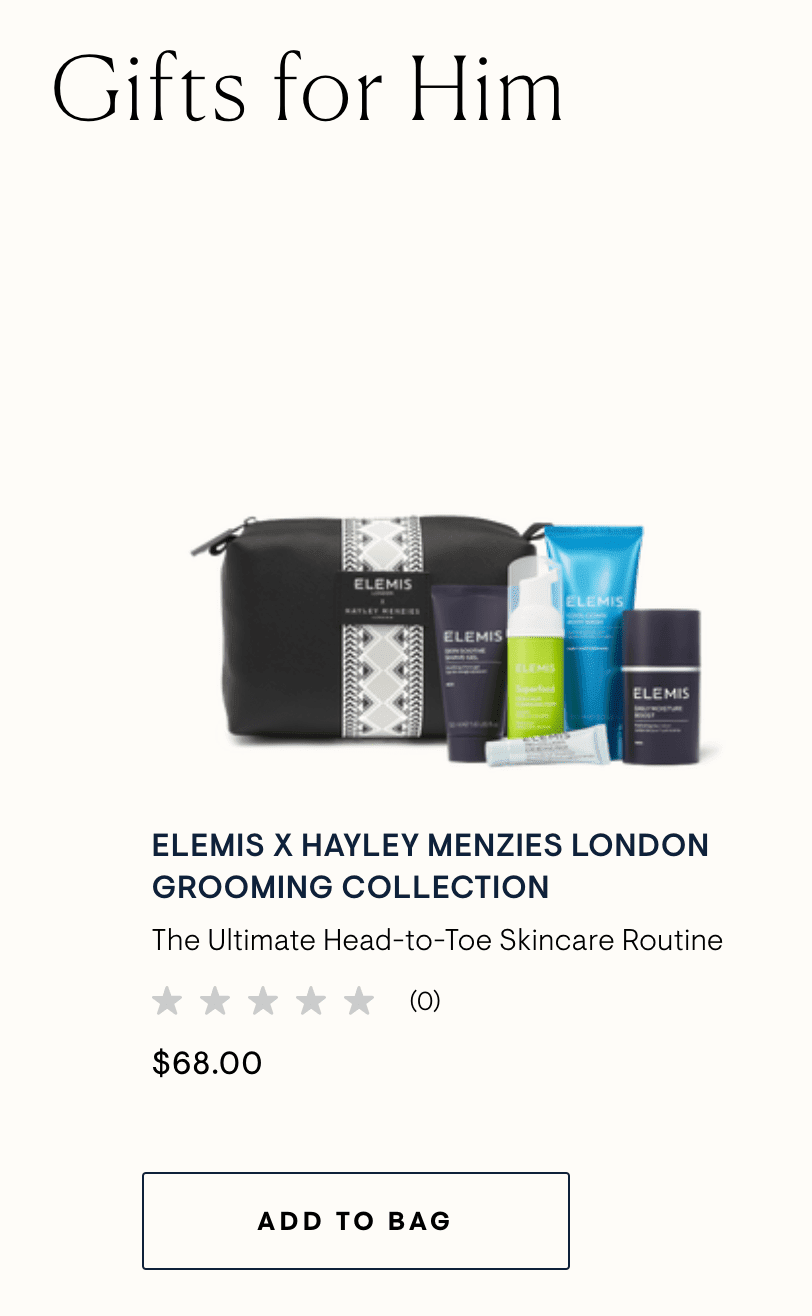
Necessity bundling
Create a stress-free shopping experience for your customers by providing a one-stop shop for buying all of the products they use together.
This type of product bundle saves your customers time from searching for the products elsewhere—including going to another store.
Dollar Shave Club is an online brand that bundles their razor blades, shaver, and shaving butter.
These products can all be used together, and the bundle provides a convenient shopping experience for their customers.
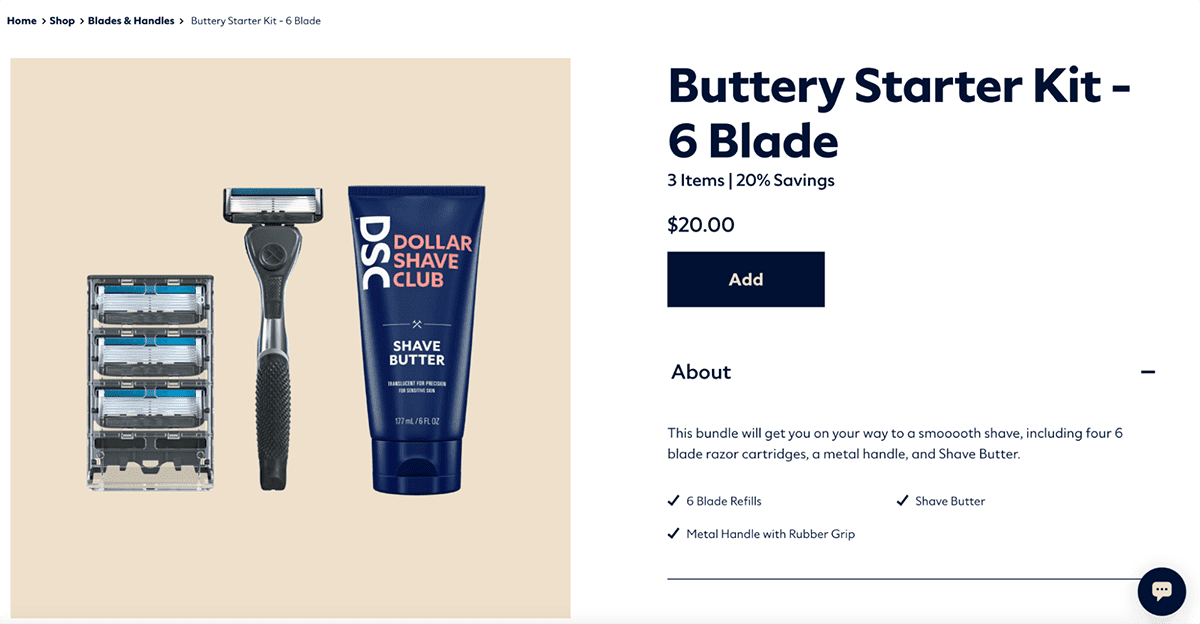
Seasonal bundling
Similar to gift bundling and perfect for the holidays—seasonal bundles offer shoppers an easy way to find excellent products to purchase during certain seasons and occasions.
Native is an online brand that sells seasonal bundles and creates festive packaging to match.

Subscription bundling
Ecommerce subscription bundles are a group of products sold in regular installments (weekly, monthly, quarterly), with subscribers signing on for the recurring expense.
People usually subscribe to products they love the most, which can be delivered in a hassle-free way.
Subscription bundles are a great way for customers to treat themselves and are hugely popular.
Research has found that customers in the US spend about $219/month on subscriptions.
Traditionally, subscription bundles contained products that people use one time or for a short duration, like food, toys, or sample-size beauty products.
But these days, many products can be turned into a subscription bundle.
To create successful subscription bundles, brands need to consider how susceptible the demand for their products is and how price can change over time.
This means that companies need to adjust the cost of their subscription bundles regularly—to be sure they are not overcharging or undercharging.
If they are, it can negatively affect sales and profit margins.
Additionally, if brands add products to existing subscription bundles, this can justify an increase in the subscription cost—since the perceived value of the bundle will increase.
Always notify your customers of any price changes made to your subscription bundles. Expect a few negative reactions, but most customers understand that prices don’t stay stagnant forever.
Clean Boutique is an online brand that sells bundles of products that contain non-toxic ingredients.
If shoppers subscribe to their Clean Beauty Roulette box, they can purchase the box at a discounted price each month.
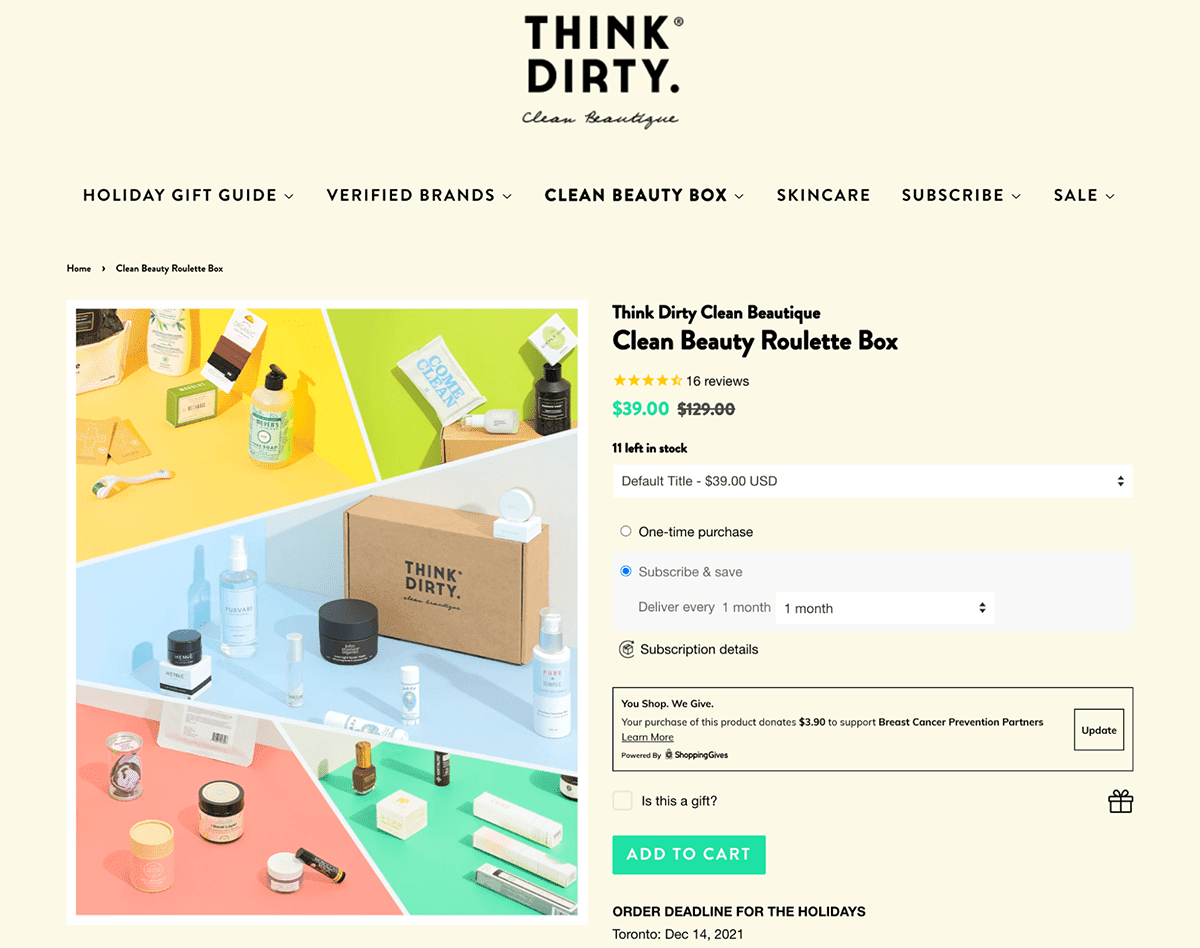
Variety pack bundling
Very popular in the food & beverage vertical—variety pack product bundles give customers the freedom to try products they wouldn’t usually buy individually.
Variety product bundles are also a great option if a customer is ordering for different people within the same household (who like different flavors of the same product).
This type of bundle pleases all of the parties involved.
Science In Sport is one of the world’s leading performance nutrition brands. They offer their shoppers variety pack bundles so they can try multiple versions of the same product—and at a discount.

Identify and use product bundling best practices to determine the success or failure of your strategy.
Let’s take a look at a few—along with product bundling examples to use as inspiration:
1. A/B test different product combinations
A/B testing, also known as split testing, is an experiment that has two variables—A and B.
For product bundles, the goal is to test and find out what product combinations will entice your customers to follow through and make a purchase.
Conducting A/B testing will also identify any underperforming product bundles that should be removed from your ecommerce store.
This Works offers multiple product bundles. In the Kits & Bundles section of their website—the bundles can be ranked in best selling order for shoppers to choose from.
With this in mind, we can look at this page as an unofficial A/B test. The bundles and product combinations they contain are likely what their customers purchase the most.
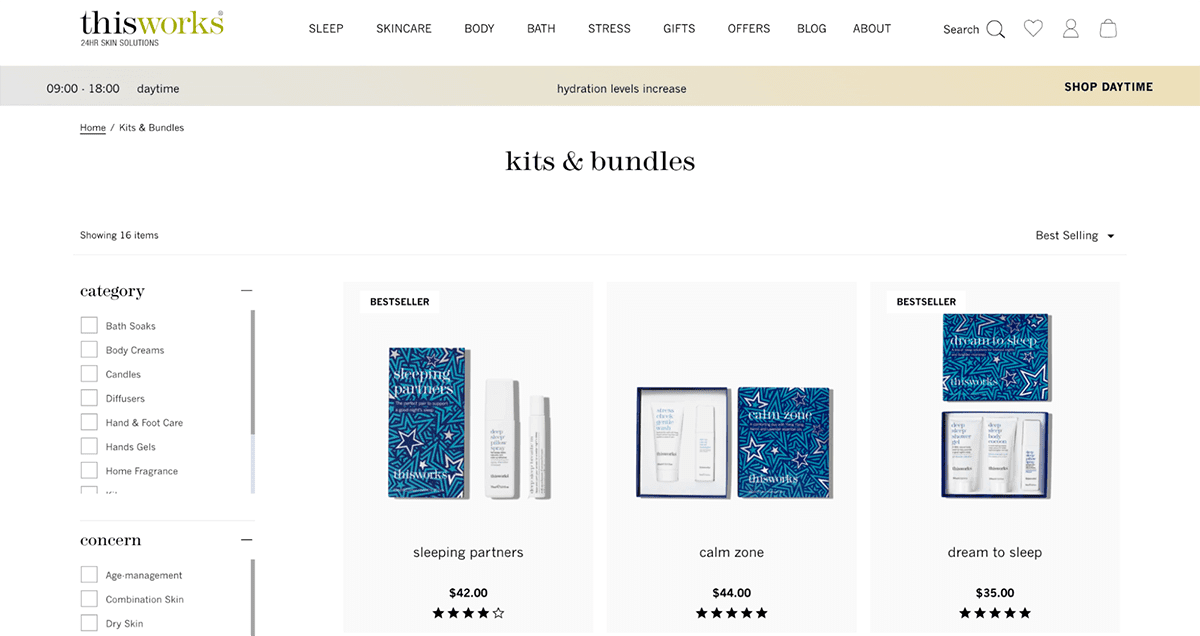
2. Keep your bundles simple and attractive
It’s crucial that customers can find out about your product bundles easily.
Suppose your pages are too complicated or provide a bad user experience. In that case, it could cause an increase in cognitive load in your customers, making it increasingly difficult for them to make a purchasing decision.
Zing is a brand that has created a clear and concise product page for its bundles.
There are no unnecessary call-to-actions or other elements on the page that could risk causing confusion. Just a simple “Add to cart” button and product description.
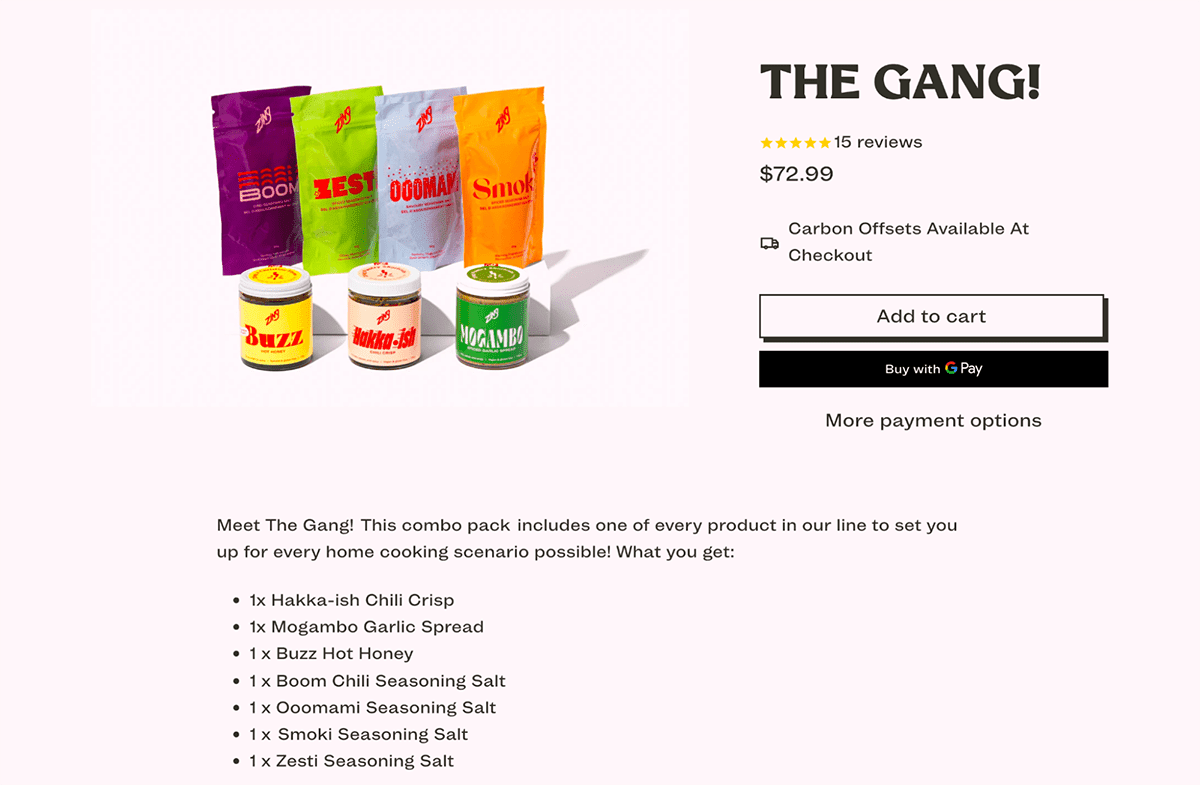
3. Consider your customers when naming your bundles
Your product naming strategy helps build brand recognition—and the names of your bundles are no different.
Product names anchor them in the minds of your customers and provide a glimpse into the inner workings of your brand.
Most importantly, the name of your bundle will also represent the types of products it contains. It should be relevant, understandable, and unique.
The name of Neom’s product bundle resonates with their ideal customer. It evokes the desired feeling of the product it contains—creating a good night’s sleep.
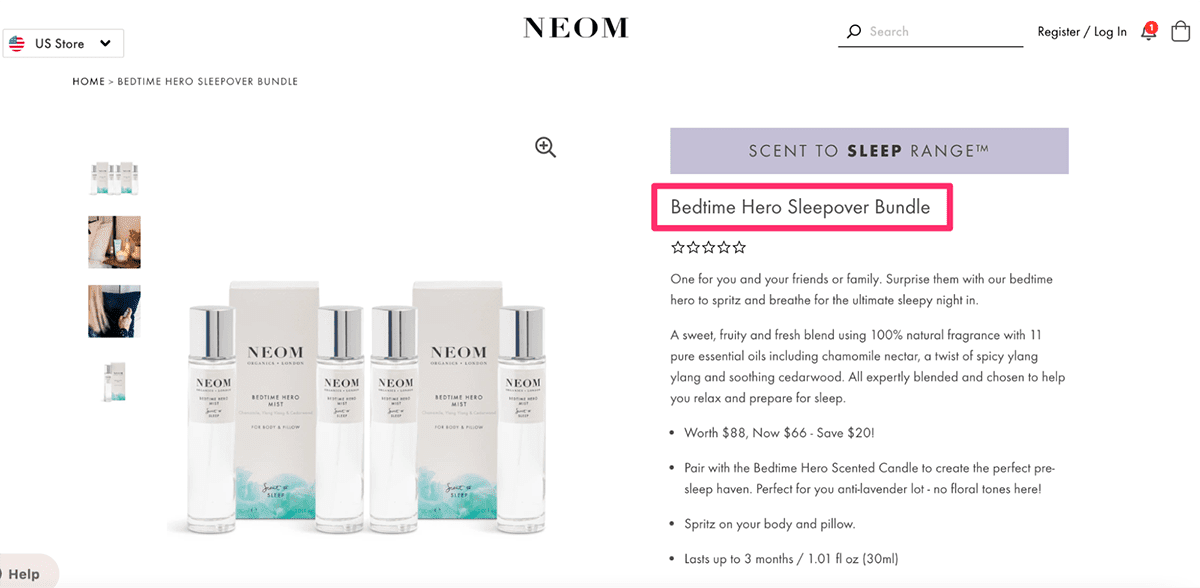
4. Introduce product bundling opportunities at checkout
Introducing related products on your checkout page triggers your customers to add them to their basket.
Additionally, it allows customers to personalize the products they purchase as a bundle. You can also offer a discount to further entice shoppers to follow through with their purchases.
Smpl is a snack bar made with functional ingredients. During their customer checkout process, they offer shoppers the chance to add additional flavors to their basket.

5. Create dedicated landing pages for bundles
A bundle landing page is a page that showcases relevant information customers need to know about the bundle they are viewing.
You can create a landing page for every single bundle your store sells.
Shogun customer Beardbrand created a separate landing page for its mix and match bundle Temple Smoke.
It allows people to mix and match the products they want to purchase with the Temple Smoke fragrance. The page provides everything customers need to move forward with their final purchase.
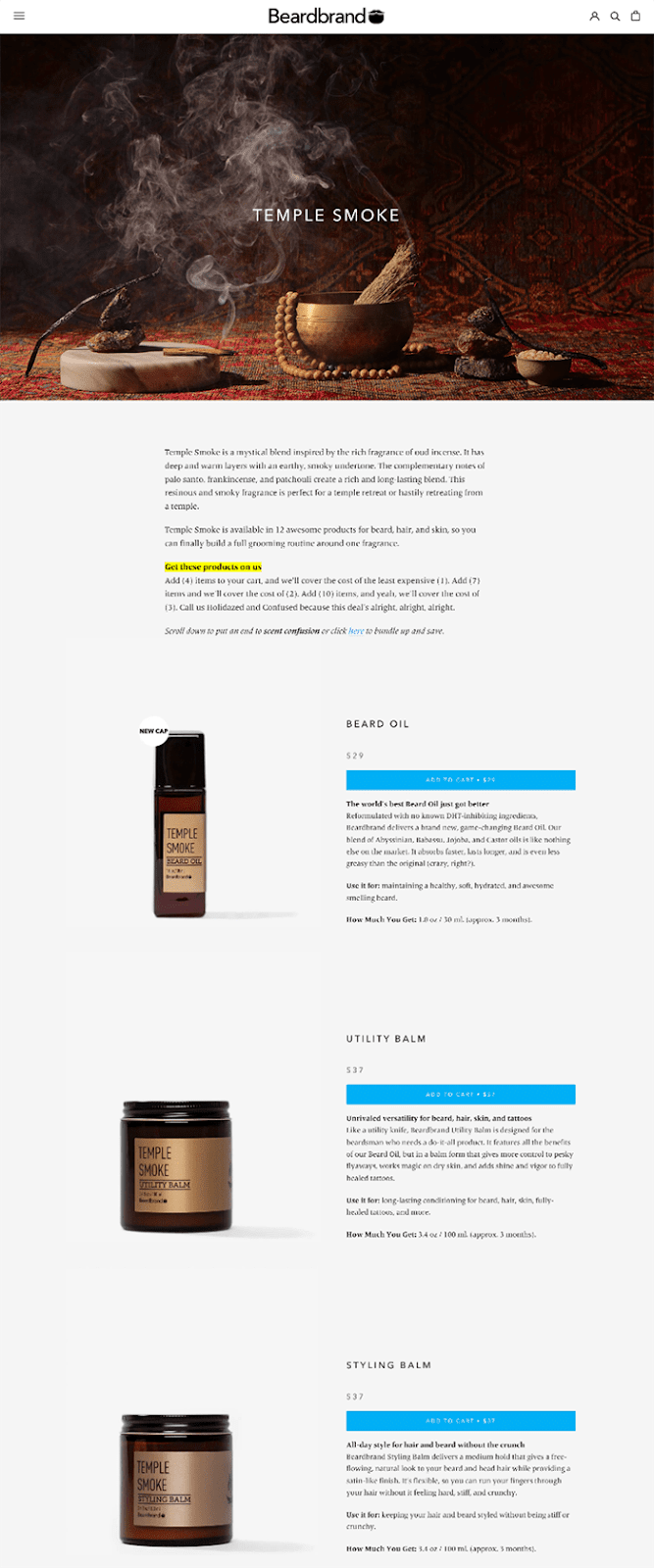
6. Offer obvious value with your bundles
Price-aware shoppers love to find deals. Indeed, studies show that when stores offer a coupon or discount—it can dissuade consumers from searching for the same product elsewhere.
When you offer discounts with your bundles, you entice them to purchase more products than they originally planned to–while also adding in a layer of excitement and urgency.
Funny Water offers a discount (albeit small) to its customers if they purchase one of their bundles.

7. Include a free item
Attract customers by bundling a free gift when they purchase certain products. People LOVE free things.
And if you select overstocked products, you’ll help inventory clearance along with expanding your customer’s knowledge about your brand.
It’s a win-win for both customers and businesses.
LOOKFANTASTIC bundled a free gift when customers purchased a certain product. Since customers are already buying a product from a specific brand, they will likely appreciate receiving the free relevant item.

8. Highlight the savings for customers
Highlighting the discounts shoppers will save when they buy product bundles is a subtle but effective way to push more visitors to purchase.
And since some customers do not specifically seek out discounts—it doesn’t mean they won’t feel enticed to purchase if they find one.
By promoting your bundles, you may help shoppers discover discounts within their area of interest.
Son of a Tailor displays exactly how much its shoppers will save if they purchase two to four t-shirts or five or more.
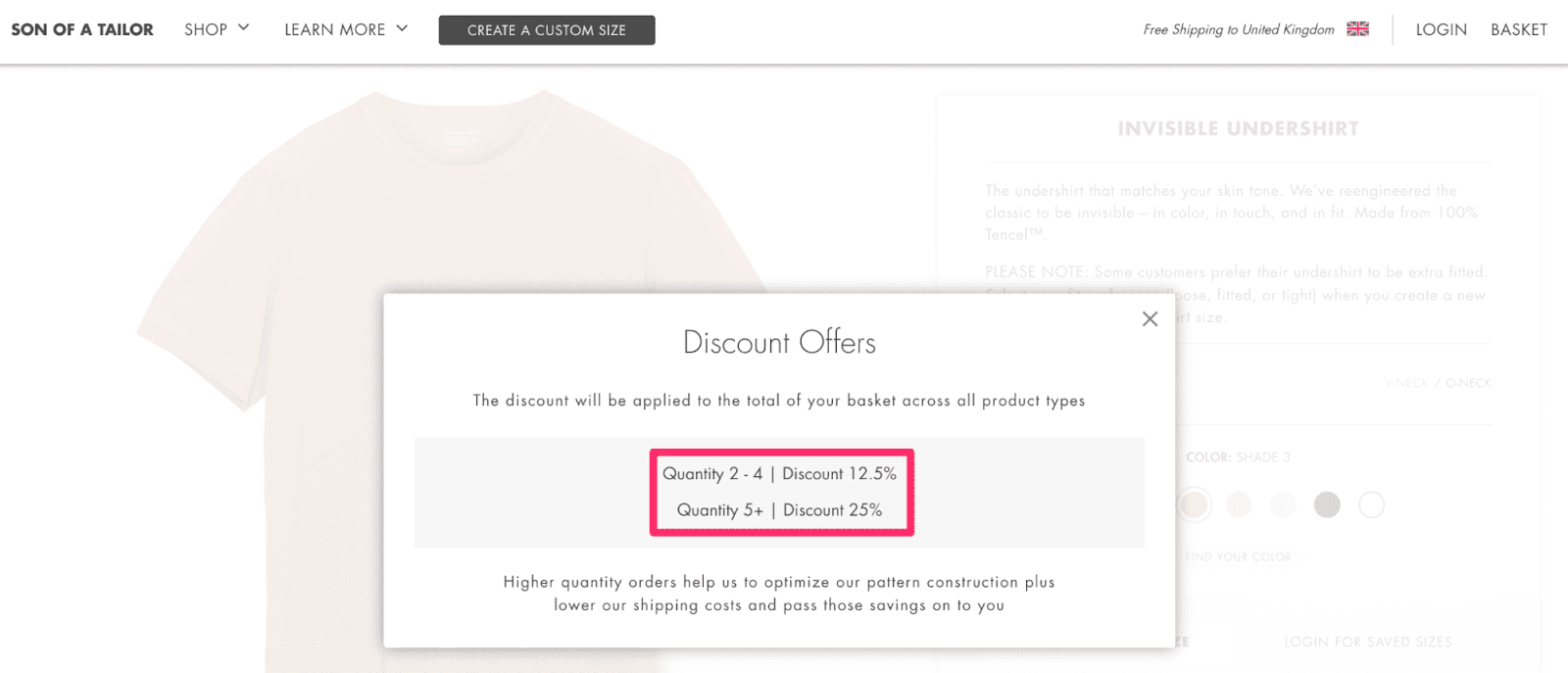
9. Make the deal time-limited to build urgency
Since discounts are only available for a specific amount of time—most work on the principle of urgency.
This helps sell product bundles available for a limited time, as shoppers will feel they’re likely to miss out on saving some money if they don’t act fast. You can even use a countdown timer to amplify the urgency.
UnHide offers 30% off their bundles for a “limited time only,” which triggers a feeling of missing out in their shoppers.
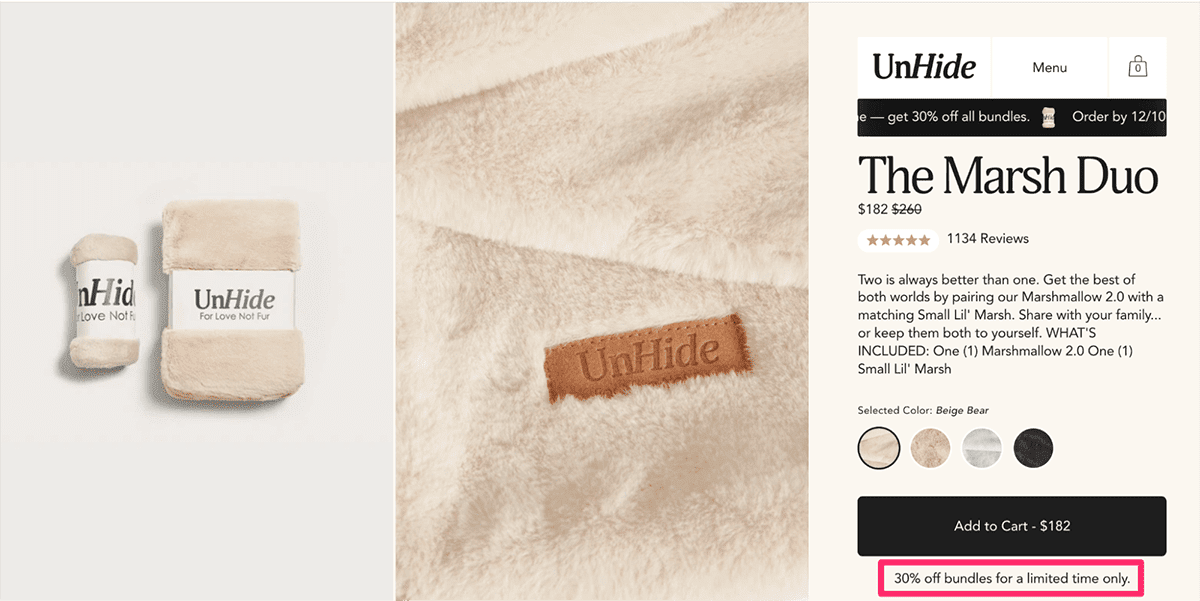
#cta-visual-pb#<cta-title>Build beautiful product bundle landing pages, all without code<cta-title>Check out all the page elements you can use to create and customize your store today. Start building now
How to create pages for your bundled products in Shopify
With Shogun Page Builder, you can create landing pages solely dedicated to marketing your Shopify product bundles.
It provides great functionality that allows you to edit your current product pages, so they beautifully display your bundles and their complementary products. Let’s see how:
Build a landing page for your bundles from a blank page
Start with a blank page to build a landing page for your product bundles with the help of Shogun’s library of elements.
You won’t have to sacrifice the design with the drag and drop editor, as it makes structuring pages super easy.

Use Page Builder templates for your bundled products
You can also choose from one of 30+ premade templates in the Page Builder app.
Starting from a template allows you to customize more quickly, needing only to make stylistic changes to something that’s already built for you.
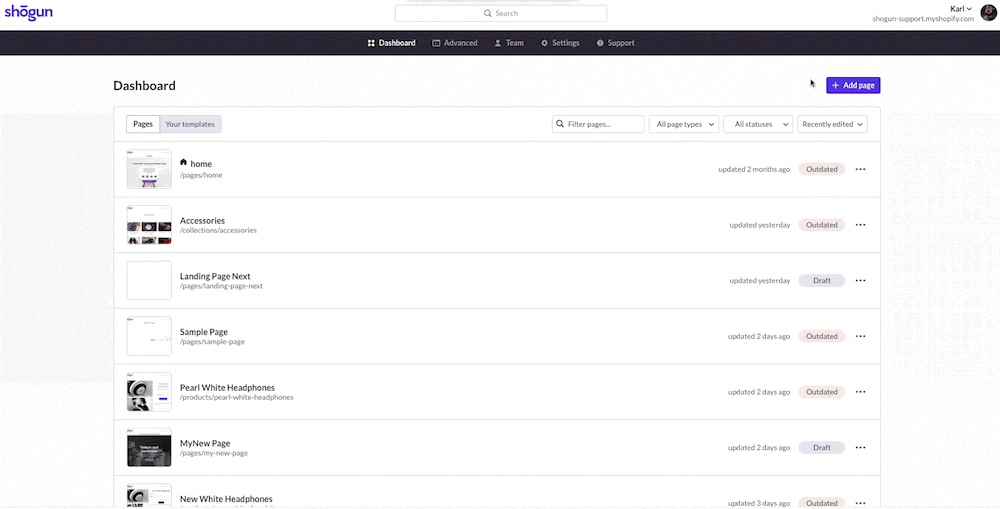
Edit existing product bundle pages to make them stand out
Finally, you can edit your existing product page to display all of the information your customers will need about purchasing your bundled products.
Just import your product page to Shogun to start creating truly custom product bundle landing pages.
You can add and customize tons of page elements, including:
- Accordions
- Sliders
- Tabs
- Product reviews
- Forms
- Videos
- Images
- Buttons
- And much more
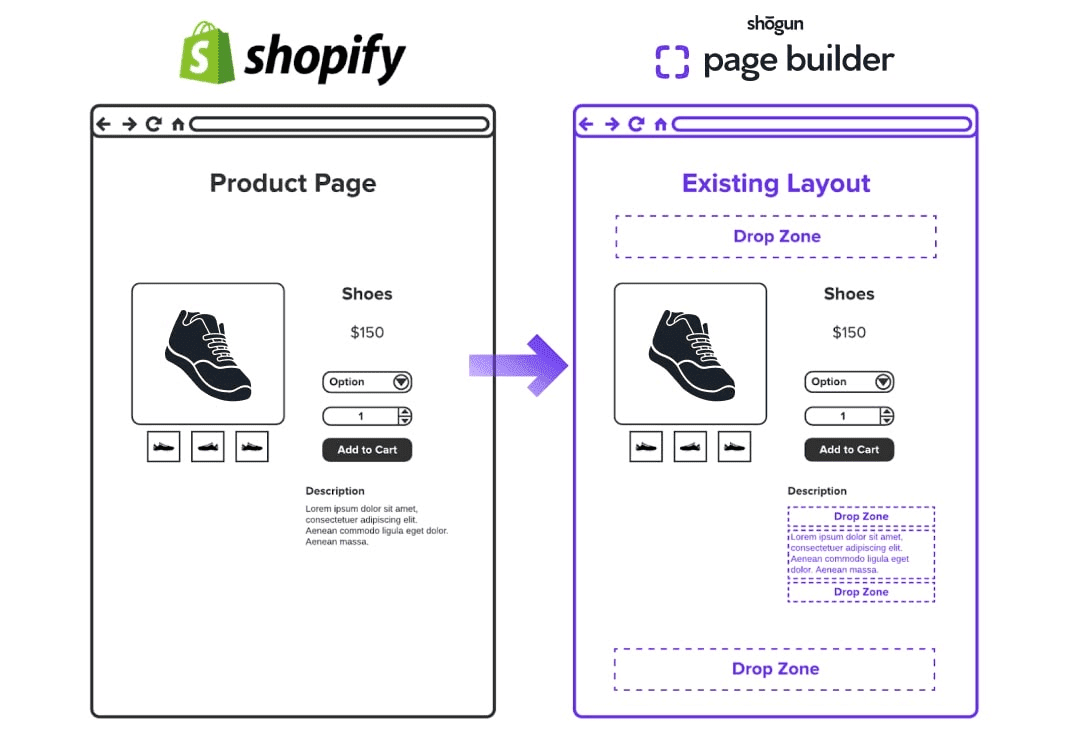
Final thoughts: Product bundling boosts sales and revenue
One thing is clear: If product bundles aren’t already an integral part of your marketing strategy—they should be in 2022.
Plan to invest in a product bundling strategy, but you don’t need to dive in immediately.
Start slowly by taking a data-driven approach to see which single products should be paired together and then test them in different bundling strategies.
Whether that’s gift bundles or variety pack bundles, you’ll find an excellent option for both your customers and your brand.
Next, utilize the best practices discussed in this post to further drive bundle sales.
They will help you move forward with a strategy that delivers success while building an audience of happy customers.
#cta-visual-pb#<cta-title>Build product bundle pages that convert<cta-title>Customize your product pages with elements that drive conversions and look outstanding.Try out Shogun for free

Michelle Deery
Michelle Deery is a writer and strategist for B2B SaaS companies. She writes content that helps brands convert visitors into paying customers.



